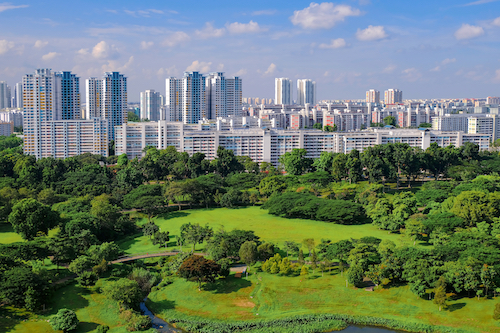Whitepaper
%20copy.png)
Taking The Heat Off Cooling: A Greener Way To Cool
2011 to 2020 was the warmest decade on record. Earth’s six warmest years have all occurred since 2015 – yet another sign of global warming’s grip on the planet. Researchers around the globe have cautioned that this trend will not only continue, but also increase in extremity.
As temperatures climb, cities are desperate to stay cool. Unfortunately, the current simplest and most mainstream solution worsens the problem – air-conditioning. They are energy guzzlers, generate more waste heat than cooling, and contribute to climate change by emitting hydrofluorocarbons, chemicals that trap heat in the atmosphere at alarming rates.
There is a critical need to find a better way to cool down our living environment. One solution that has gained traction across the globe is district cooling – central cooling plants that supply chilled water to various buildings through an underground network of insulated pipes.
These plants consume less energy for the same amount of cooling, free up space, and reduce lifecycle costs as buildings do not need to invest in their own chillers. Such systems are already being used in Singapore, such as the Marina Bay district – cooling more than a dozen buildings in the area, including Marina Bay Sands, the Marina Bay Financial Centre, and One Raffles Quay.
There is, however, a limitation to the way district cooling systems are currently built. They are typically incorporated into the design of a new development, and hence are more suitable for greenfield sites.
For built-up or brownfield sites with buildings that already have their own chiller plant systems, it becomes much harder to introduce district cooling. Hence, a novel approach – a distributed district cooling (DDC) network – is being explored in Tampines Central, under the Tampines Eco Town initiative. It was conceptualised by SP Group, a leading energy utilities company.
In the DDC network, existing cooling systems of selected buildings will produce chilled water for their own cooling needs and that of other buildings within the district.
A preliminary feasibility study was conducted on this DDC network concept in Tampines Central, and the results were promising.

In one year, the DDC network could potentially achieve:
- 17% reduction in energy consumption - enough to power 1,665 three-room HDB households for a year.
- 18% fall in carbon emissions from both energy savings and refrigerant reduction– equivalent to removing 2,250 cars from roads per year
- S$4.3m from energy, equipment replacement and maintenance cost savings, as well as potential earnings from leasing out freed-up chiller plant space
The findings show that the DDC network would be able to lower energy consumption and carbon footprint. It is a possible game changer that could green entire developments at one go – an attractive solution for brownfield sites such as industrial estates and existing townships. With Singapore announcing the Singapore Green Plan 2030 to address climate change and promote sustainable living, district cooling networks could open the door to a cooler and cleaner future.

%20(dragged).jpg)